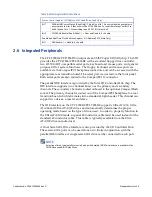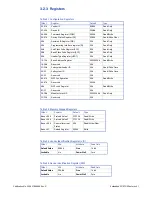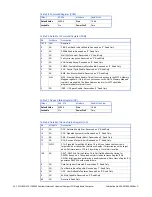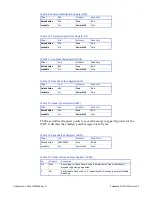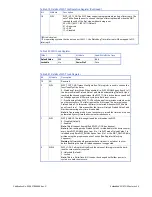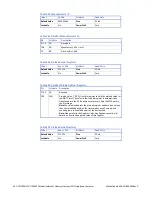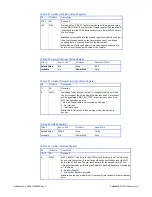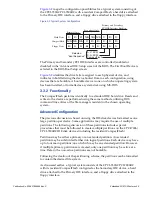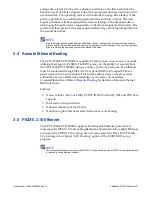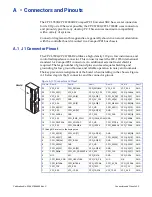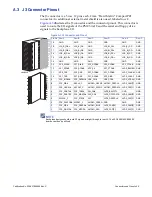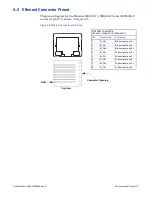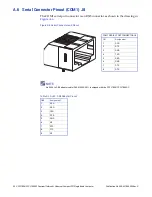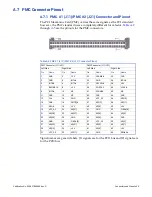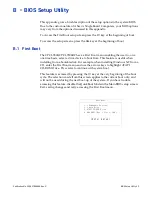
48 CPCI-7806/CPCI-7806RC Pentium/Celeron M Universal CompactPCI Single Board Computer
Publication No. 500-657806-000 Rev. G
3.2.4 Register Unlocking Sequence
The register unlocking sequence is necessary whenever writing to the RELOAD
register or either PRELOAD_VALUE registers. The host must write a sequence of
two writes to offset BAR1 + 0Ch before attempting to write to either the
WDT_RELOAD and WDT_TIMEOUT bits of the RELOAD register or the
PRELOAD_VALUE registers. The first writes are 80 and 86 (in that order) to offset
BAR1 + 0Ch. The next write will be to the proper register (e.g. RELOAD,
PRELOAD_VALUE_1, PRELOAD_VALUE_2).
The following is an example of how to prevent a timeout:
1. Write 80 to offset BAR1 + 0Ch
2. Write 86 to offset BAR1 + 0Ch
3. Write a 1 to RELOAD [8] (WDT_RELOAD) of the Reload register.
NOTE
Any subsequent writes require that this sequence be performed again.
3.2.5 Reload Sequence
To keep the timer from causing an interrupt or driving WDT_TOUT#, the timer
must be updated periodically. The frequency of updates required is dependent on
the value of the Preload values. To update the timer the register Unlocking
Sequence must be performed followed by writing a 1 to bit 8 at offset BAR + 0Ch
within the watchdog timer memory mapped space. This sequence of events is
referred to as the Reload Sequence.
3.3 CompactFlash
The CPCI-7806/CPCI-7806RC features an optional onboard CompactFlash mass
storage system with a capacity of up to 1 Gbyte. This CompactFlash appears to
the user as an intelligent ATA (IDE) disk drive with the same functionality and
capabilities as a “rotating media” IDE hard drive. The CPCI-7806/CPCI-7806RC
BIOS includes an option to allow the board to boot from the CompactFlash.
3.3.1 Configuration
The CompactFlash resides on the CPCI-7806/CPCI-7806RC as the secondary IDE
bus master device (the secondary IDE bus slave device is not assignable). The
default setting in the BIOS ‘STANDARD CMOS SETUP’ screen is the ‘AUTO’
setting. In the BIOS ‘ADVANCED SETUP’ screen, the secondary PCI IDE interface
must be enabled for the CompactFlash to be functional. Refer to
for additional details.
8
R/W
WDT_RELOAD: To prevent a timeout the host must perform the Register
Unlocking Sequence followed by a 1 to this bit.
Note:
Refer to Register Unlocking Sequence for details on how to write to this
bit.
7:0
W
Reserved
Note:
The reload sequence is only necessary for the Reload register and
Preload_Value registers and is not used in Free Running mode.
Table 3-31 Details of Reload Register (Continued)
Bit
Attribute
Description


